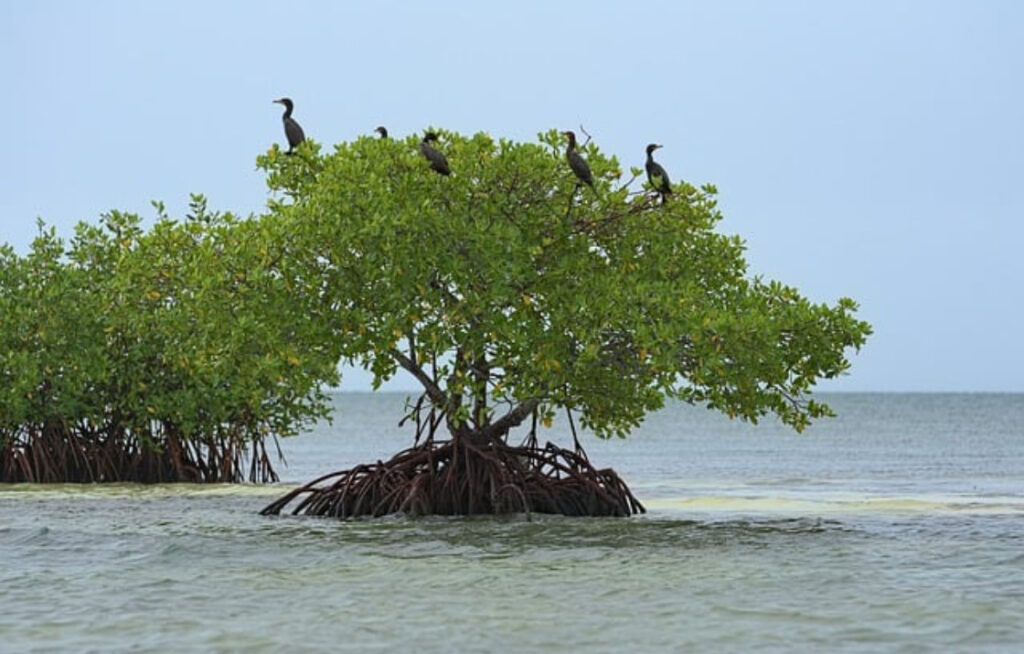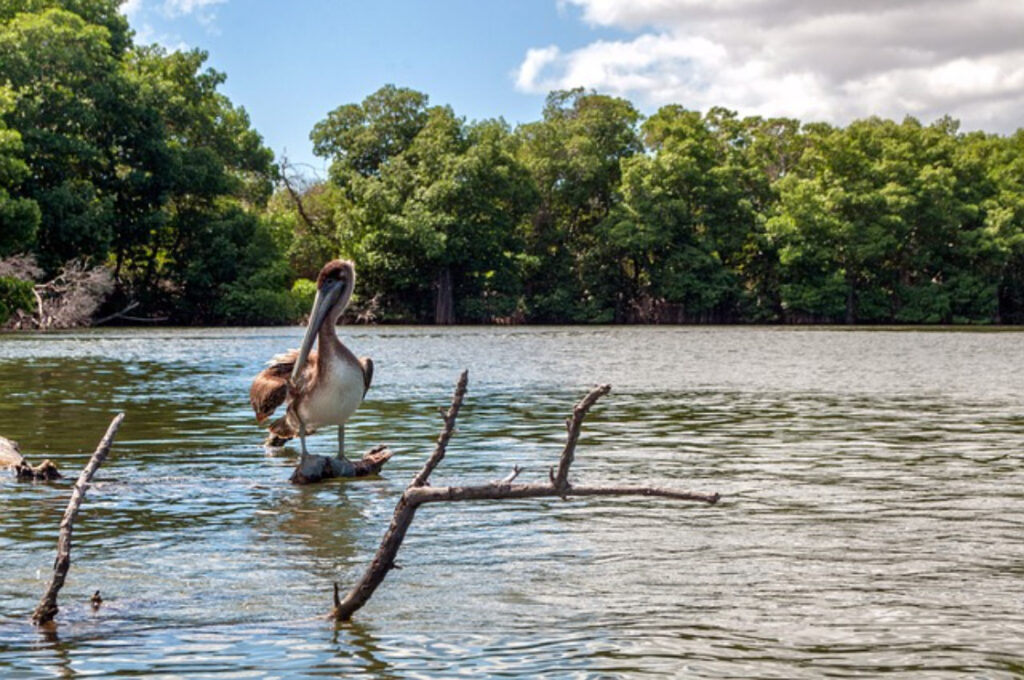The forests of mangroves are ecosystems unique in that they thrive at the interface between land and sea, being especially adapted to living in salty and brackish waters. These trees are found along the coasts and estuaries of 123 countries in tropical and subtropical zones.
Although they account for less than 1% of the world's forest cover, the mangroves provide goods and ecosystem services approximately 2.4 billion people living within 100 km of the coastline, according to the United Nations Environment Programme (UNEP, 2023).
The mangroves provide protection from storms, erosion and flooding, are sources of food and timber, improve water quality and allow carbon sequestration. In addition, they provide natural habitat for more than 1,533 species, including nursery habitats for many commercially important fish. These ecosystems also benefit the health of coral reefs and adjacent seagrass beds.

Ecological status and trends
Despite their importance, the mangrove forests face multiple human threats such as conversion to aquaculture and agriculture, coastal development, overexploitation, pollution, and the effects of the climate change.
Global Mangrove Watch reports that in 2020 there were 147,359 km² of mangroves globally, with 51% in Asia and the Pacific, 29% in the Americas, and 20% in Africa. Since 1996, 3.4% of mangrove area has been lost. Although global mangrove loss has recently stabilized, these forests remain degraded and polluted, losing biodiversity, an impact that is not reflected in satellite imagery.
Biodiversity in the mangroves are at risk, with 15% of the 1,533 species associated with them at risk of extinction. In addition, nearly 50% of mammals, 22% of fish, 16% of plants, 13% of amphibians, and 8% of associated birds and reptiles are threatened. The risk of extinction is increasing for 44% of species and worsening for 89% of those already at risk.

Why is it important?
The mangrovesDespite their small size, they are crucial for coastal towns. The ecosystem services The forests they provide have an estimated value of between US$33,000 and US$57,000 per hectare per year, including timber, fisheries, medicinal compounds, coastal protection and ecotourism.
They are also one of the world's most carbon-rich ecosystems, fundamental to mitigating climate change. climate change. Loss and degradation of the mangroves generates massive emissions of greenhouse gasescausing billions of dollars in economic damage each year.

What can we do?
The mangrove protection and restoration is essential as a strategy for climate change mitigation and adaptation. UNEP leads global efforts to mitigate climate change in marine and coastal environments, supporting regional and global assessments, promoting international cooperation and managing conservation and restoration projects.
The mangrove restorations is a central aspect of the United Nations Decade on Ecosystem Restoration (2021-2030)which seeks to restore degraded ecosystems to improve food security, clean the air, secure freshwater supplies, address the climate crisis and protect vital habitats.
Key facts
- 1,533 species are associated with mangroves; 15% are threatened with extinction.
- Nearly 50% of mammals, 22% of fish, 16% of plants, 13% of amphibians, and 8% of mangrove-associated birds and reptiles are endangered.
- Mangroves are an important carbon sink, with average stocks of approximately 1,000 tons of carbon per hectare.
- Between 1996 and 2020, mangrove loss released emissions equivalent to four times the global CO2 emissions from burning fossil fuels in 2018.
- Emissions resulting from mangrove loss account for nearly one-fifth of global emissions from deforestation, causing economic damages of between US$6 billion and US$42 billion annually.
Mangroves are vital to the health of the planet and the well-being of coastal communities. Immediate action for their protection and restoration is crucial to ensure a healthy and healthy sustainable future for all.
Source: UN Environment


